Glacier hazardsOver the centuries, glaciers have been responsible for many natural disasters as a result of ice avalanches. Other disasters have arisen from the damming of lakes by glaciers and moraines, followed by failure of the dam. The worst disasters, accounting for tens of thousands of lives, have occurred in Peru, but other seriously affected regions have been the Himalaya and the Alps. This section illustrates the vulerability of some regions and the consequences that follow from a catstrophic event. |
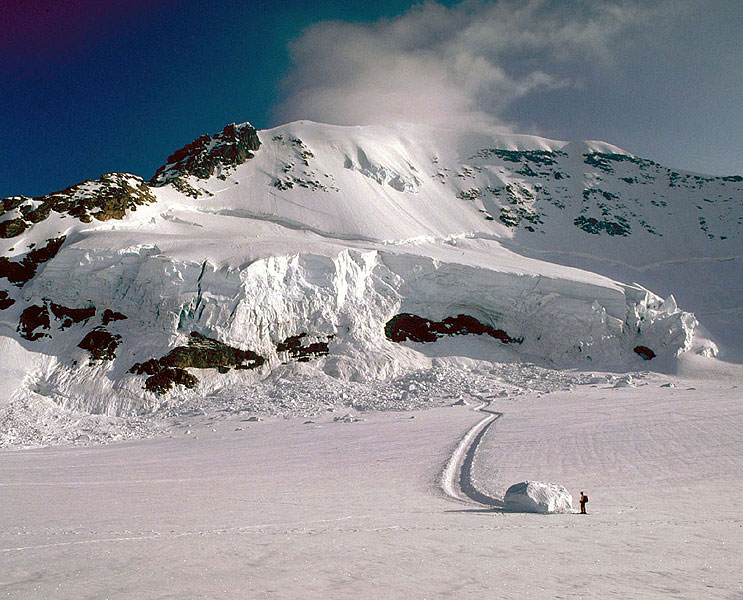 A curious block of ice has fallen off a hanging glacier on the south side of the Mönch (4099 m), Switzerland. Despite its moderate mass of about 55 tones, the compact snow surface has allowed it to travel an exceptionally long distance. Falling ice is one of the dangers that climbers face in glacierized mountain areas. JA | 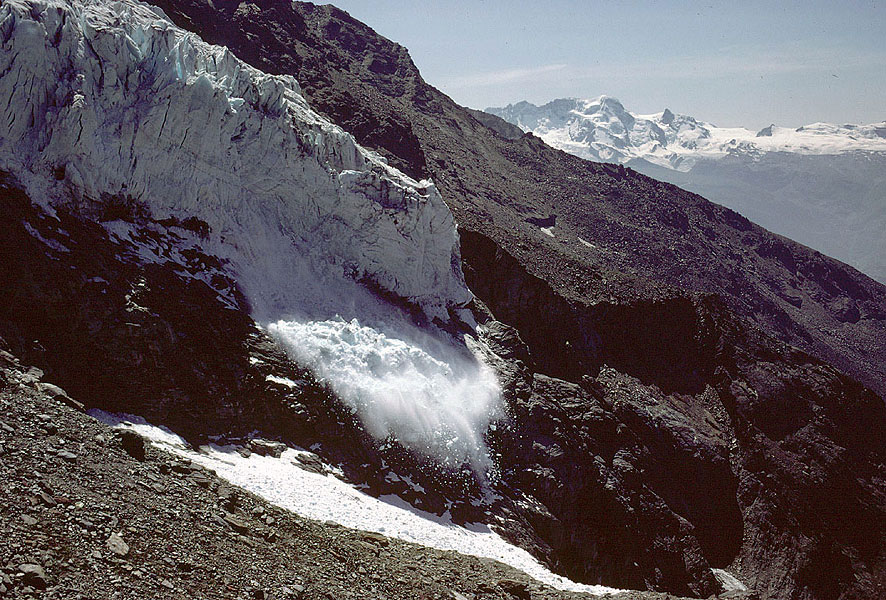 Ice avalanche from the snout of Festigletscher, Canton Valais, Switzerland in 1981. An estimated 2000 cubic metres of ice were involved. Considerably larger events of this nature have been known to threaten the village of Randa in the valley below. JA | 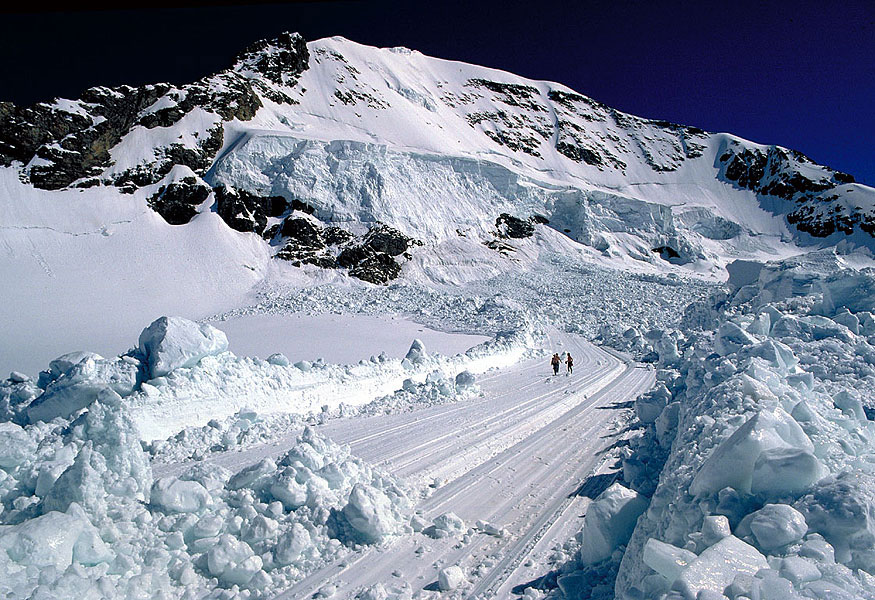 A major ice avalanche from a hanging glacier on the south flank of Mönch (4099 m), Switzerland. More than 300,000 cubic metres of ice fell, some of it traversing the popular route from Jungfraujoch to the Möchsjochhütte. Nobody was hurt, but these tourists are unknowingly exposing themselves to further potential avalanches. JA | 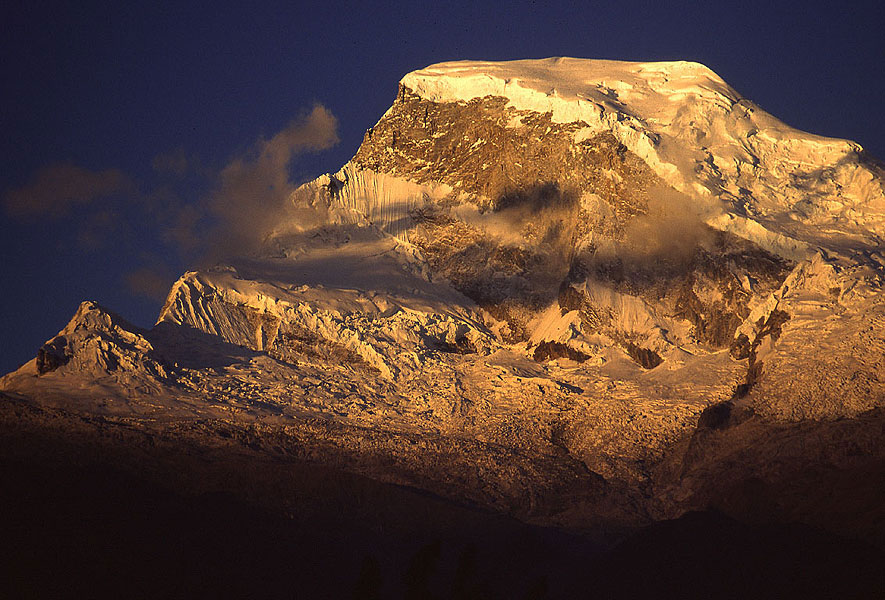 The glacierized summit of Nevado Huascarán Norte (6746 m), Peru, at sunset. On 31 May 1970 a powerful earthquake caused part of the summit icefield to collapse along with rock from the exposed face below the summit. The avalanche swept down the mountain, obliterating the town of Yungay and its 18,000 inhabitants. MH |
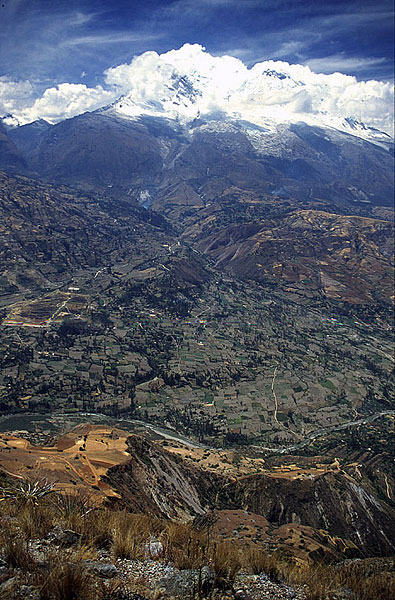 The full length of the route of the disastrous Huascarán avalanche is illustrated in this photo. The avalanche was largely constrained by the steep valley below but a small part spilled over a ridge to the left of the steep valley, wiping out Yungay. The town has been rebuilt in a safer location on the hillside off the picture to the left. MH | 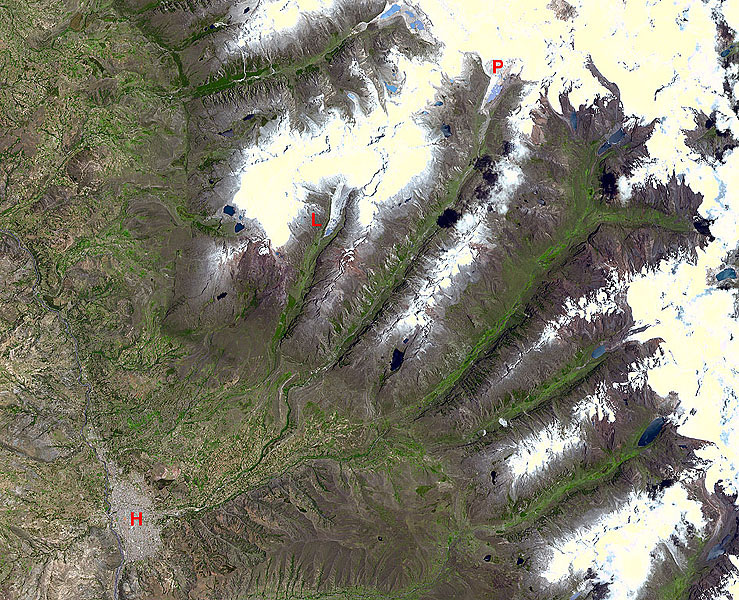 Satellite image of Huaraz (H) and its relationship with the nearby Cordillera Blanca, Peru. An outburst flood from Laguna Cohup (P) on 13 December 1947 killed 7000 people. Dangers were reduced later by lowering of the moraine-dammed lake Llaca (L) in the adjacent valley (NASA image 5 November 2001). | 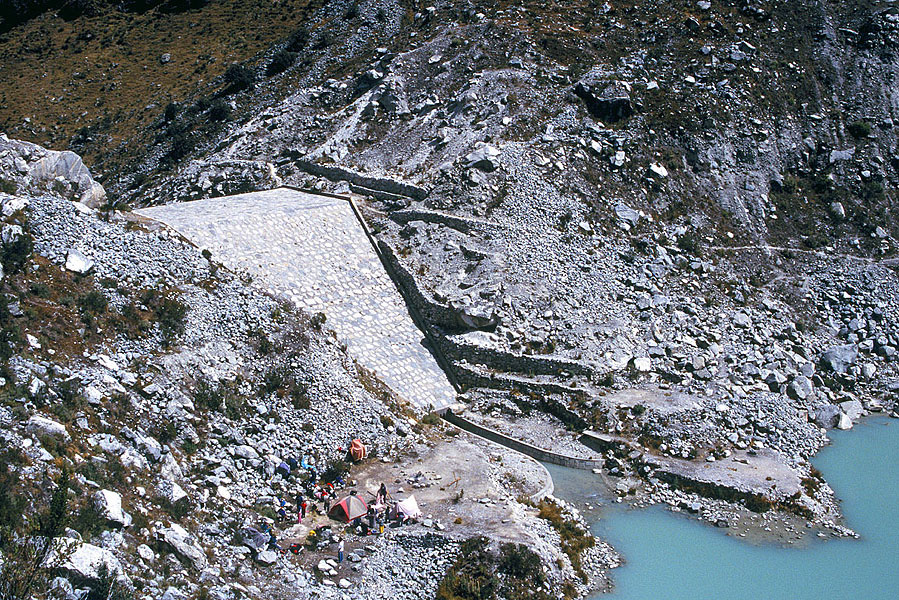 Ground view of lake Llaca illustrating the high moraine dam, behind which is a lake with calving glacier. The spillway was constructed to lower the lake to a safe level. MH | 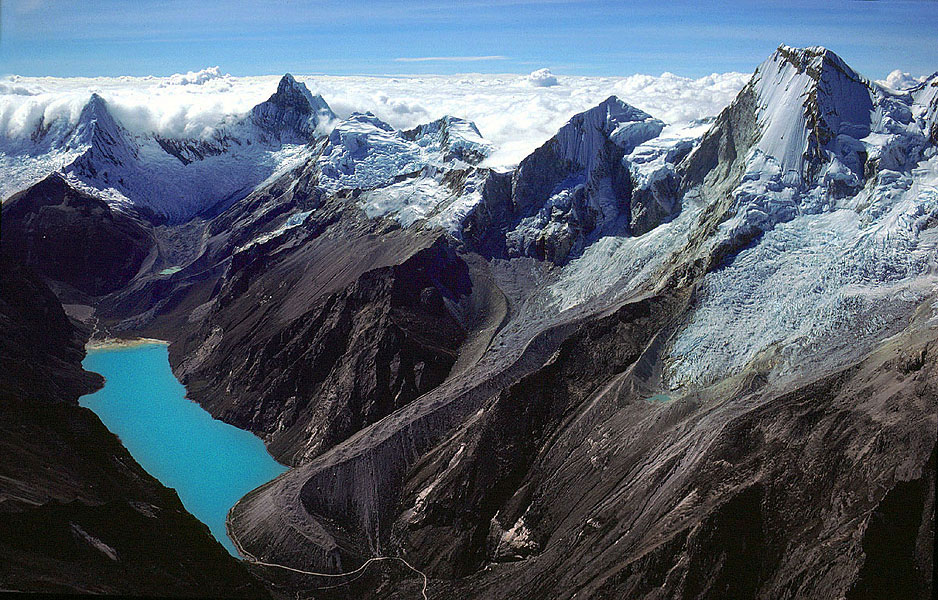 Laguna Parón, dammed by debris-mantled glacier Hatanraju before the lake level was lowered (photo taken in 1981). The lake has been artificially lowered by tunnelling through bedrock to the left of the moraine dam, at least temporarily averting the threat of an outburst flood. JA |
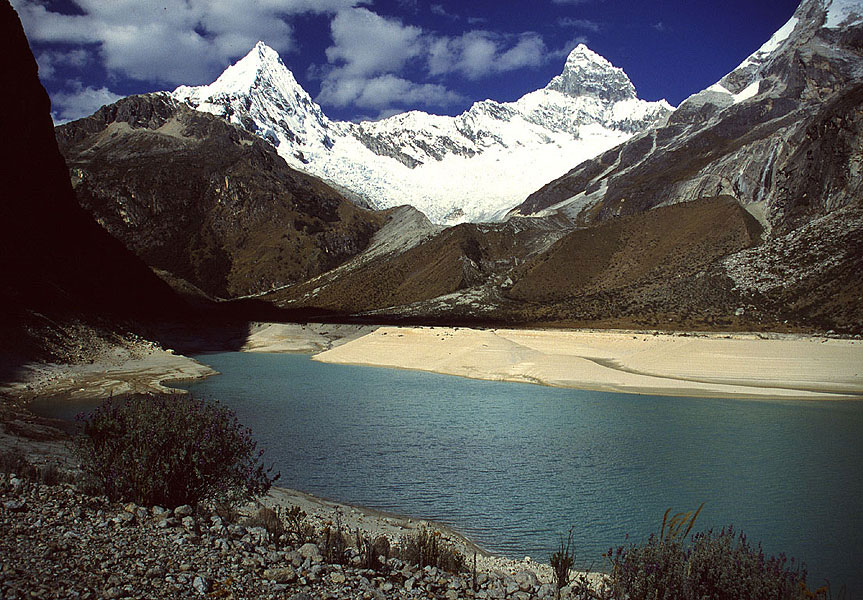 Laguna Parón after lowering of the water level (photograph taken in 2002). The lake margins and the sandy beaches left high and dry through lowering of the lake. In the background, another lake is forming behind a moraine dam, indicating that an outburst is possible in future, although Laguna Parón may have the capacity to hold it. MH | 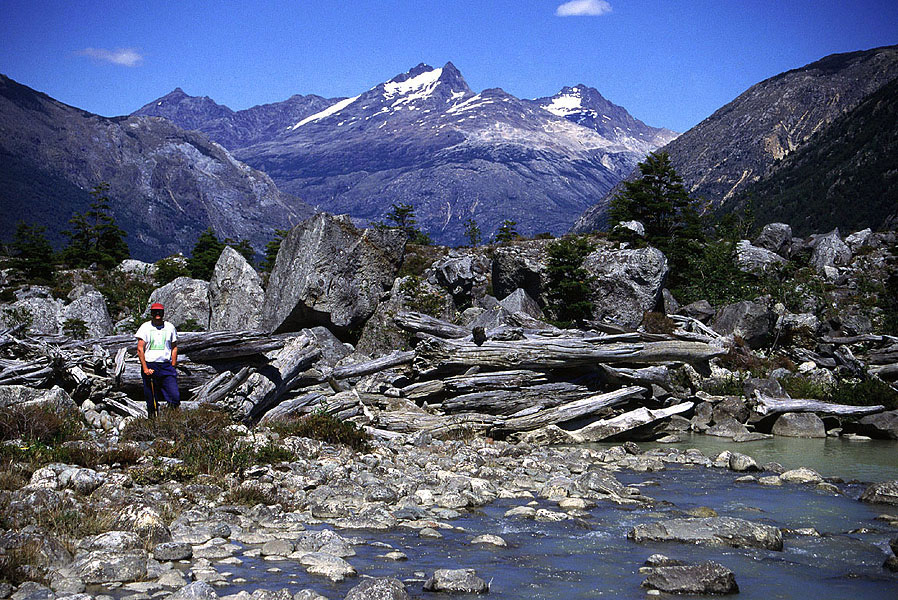 This huge pile of boulders and logs forms a partial blockage of the river below Laguna Soler in a remote valley below the North Patagonian Icefield. We interpret this as the product of a glacial lake outburst flood, as the lake level appears to have been dramatically lowered by a breach in the nearby moraine dam. MH | 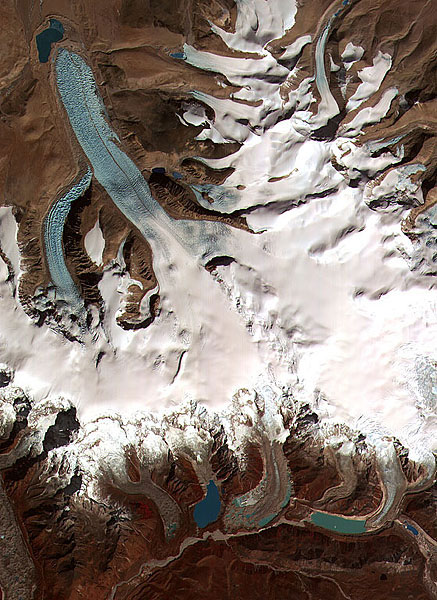 The glacierized Himalayan border region of Bhutan (bottom) and Tibet (top) seen in an satellite image. At bottom right are a series of moraine dammed lakes. A breach of one dam in 1994 led to severe flooding and loss of life up to 200 km downstream. Hazards are continuing to build up in this area to critical levels. (Courtesy NASA; 29 May 2002). | 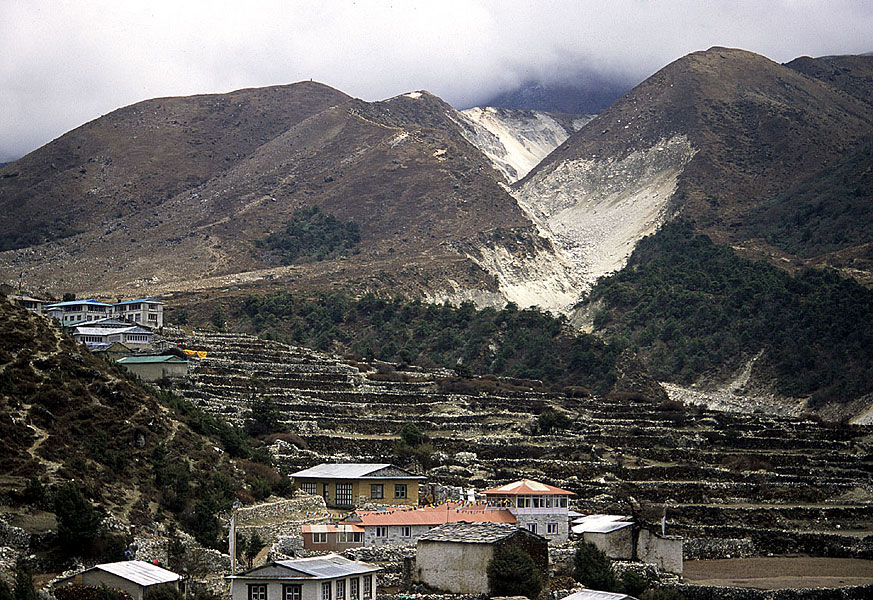 A glacial lake outburst flood in1977 at Nare Glacier, in the Khumbu Himal of Nepal, caused severe erosion of old moraines downstream. The terrace on which the village of Pangboche is located has also been partially destabilised. Such events may not cause much loss of life in this valley, but if agricultural ground is lost to the river, then the impact on communities can be severe. MH |
 Glacial lake outburst floods transport huge amounts of debris, including large boulders. If the boulders become lodged, small boulders pile up behind, and ‘boulder jams’ form, as in this example below Nare Glacier, Khumbu Himal. MH | 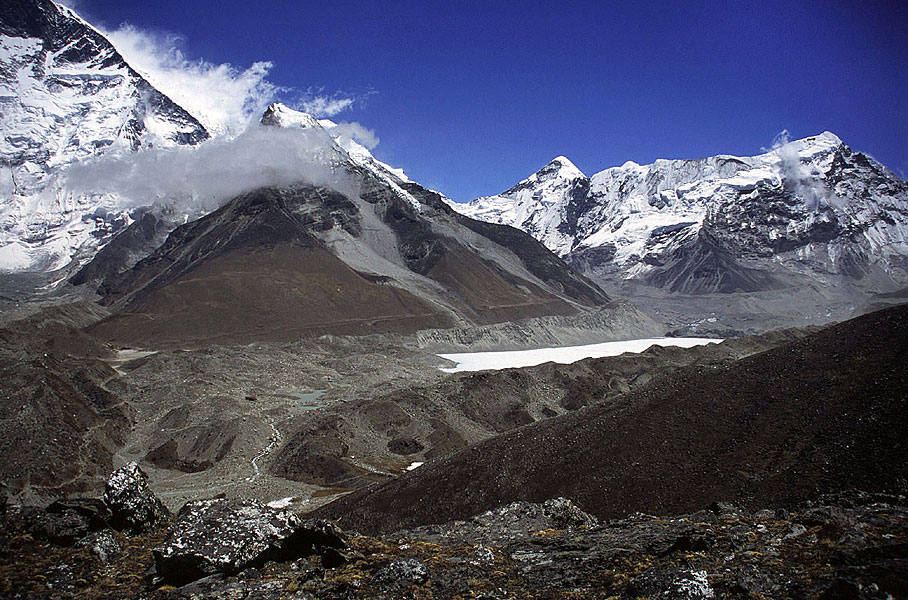 Potentially hazardous moraine-dammed lakes are forming in many parts of the Himalaya. The lake in this photograph, associated with Imja Glacier, Khumbu Himal, has grown within a decade, and some scientists have predicted that this is a candidate for failure. MH |  As lakes form behind moraine dams, the glacier commonly recedes as a calving vertical cliff. Here, the snout of Imja Glacier, covered in debris, produces small icebergs, although a large calving event might generate a displacement wave that could affect the integrity of the dam. MH | 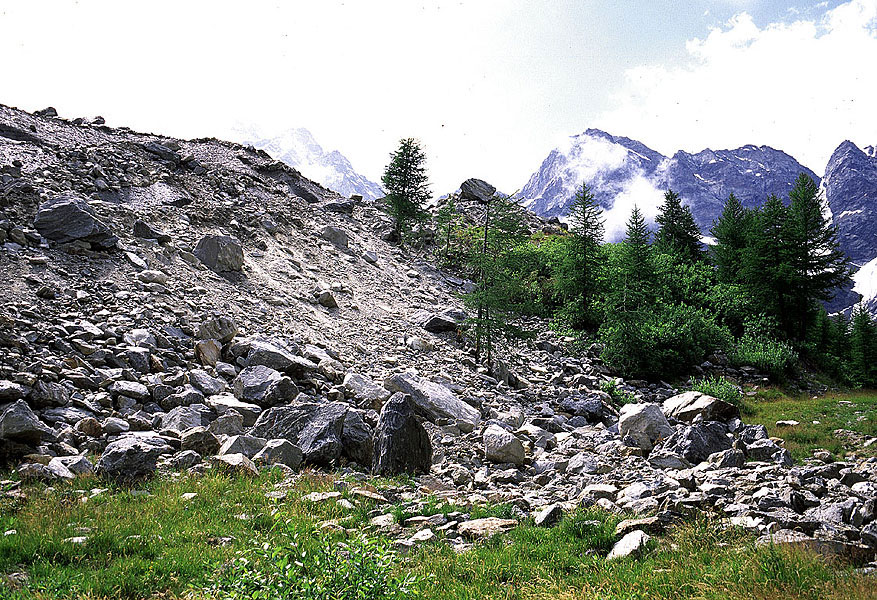 Ghiacciao del Belvedere near Macugnaga in the Italian Alps advanced in a surge-like fashion. The Little Ice Age moraine was being breached, trees were being felled, and falling boulders began to threaten tourist infrastructure. JA |
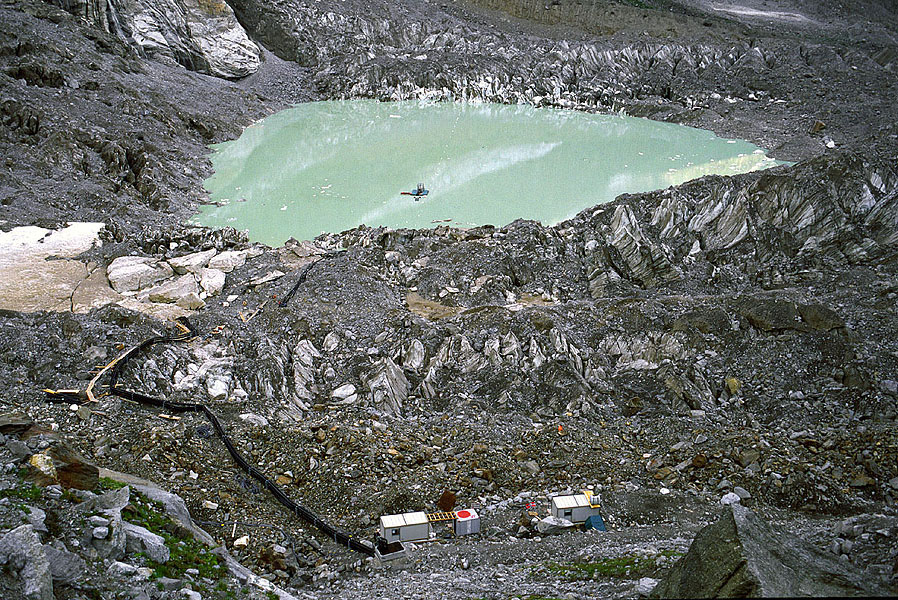 A potential hazard associated with the unusual behaviour of Ghiacciao del Belvedere was the rapid growth of a supraglacial lake, the bursting of which was felt to be likely. Pumps were installed to lower the lake to safer levels. JA | 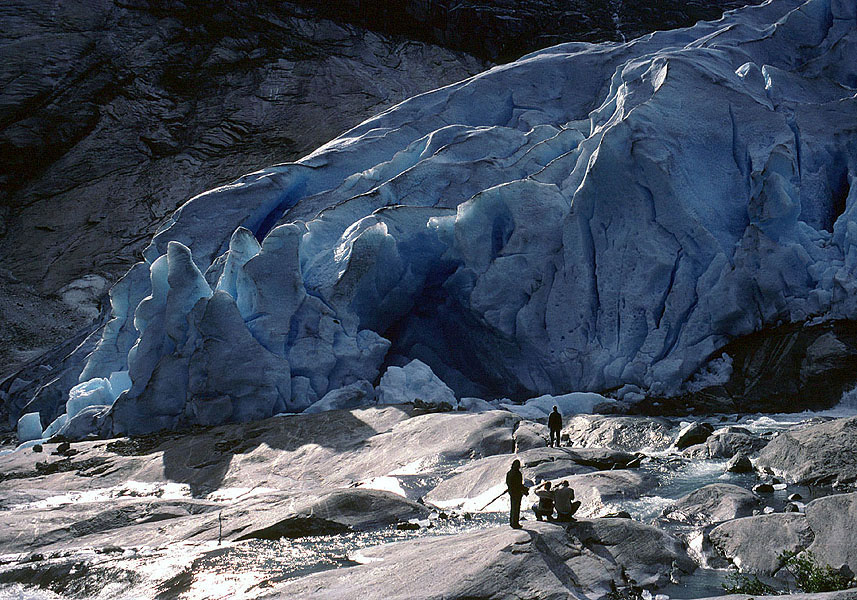 Like many other glaciers, the advancing Nigårdsbreen, an outlet glacier from Josterdalsbreen ice cap discharges water in an unpredictable manner. A sudden increase in discharge took these tourists by surprise, and they were lucky to escape with their lives. JA | | |
| Photos: Michael Hambrey (MH), Jürg Alean (JA) |